The USPTO: Patenting logical conclusions since 1790

We've noticed that when we post a story about a new patent application, the conversation seems to always devolve into the same issues: whether or not a company is a bully, and whether the patent is just stealing an idea from somewhere else. The trouble is that these views miss the point entirely. And, to be clear, although we will use Apple as an example multiple times in this piece, it is only because Apple's patent library has garnered something of a mythical status in the tech world. There are plenty of companies that game the system just like Apple, but that is the point: these companies are playing within the system, so we don't blame them for the state of things. Apple has simply been one of the best at taking advantage of a broken system. Apple's patent filings and subsequent lawsuits are a symptom of the problem with the patent system, they are not the cause, nor will eliminating them necessarily be the solution. We need reform of the whole patent system.
When we pose this argument, people often jump to the "gun metaphor" and ask if guns kill people or people do, but we find this to be a flawed analogy for the situation. Because ultimately people do kill people, but guns make it much easier, and its far better to take the gun away than it is to stop murder all together. Some companies will always be greedier than others or be bullies with litigation, that's part of the nature of the people who run the company, but they can only go so far within the law, and right now the patent laws allow far too much room to be bullies. We find that a better way to think of it is when someone is sick, in this case the patent system. When someone is sick, is it better to give them cough drops to fix their symptom, or is it better to give antibiotics to kill the infection? The patent system is sick, and while companies like Apple do take advantage of that, they are just the symptom of the illness. If you don't like what those companies do, you can boycott them, but that won't fix the problem. The problem is that we need patent reform, and the majority of the things that government representatives hear is from lobbyists hired by those companies, not from angry consumers like you. So, a far better way to see change in companies gaming the system is to fix the system, and that requires more than boycotting brands, it requires contacting your government representatives.
We've talked about the building mobile patent war in the past, and we've mentioned in various articles how the US Patent and Trademark Office is horribly overworked, underqualified and ill-designed to deal with the glut of technology patents that it has been seeing. In this piece, we want to expand on those ideas, and try to boil down our argument to the basics. So, let's start with the most basic block of the overall patent argument: what is an invention?
Invention vs discovery and redesign
Discovery is finding something that already exists in the world. Redesign is altering how that existing object looks, feels or operates. Invention is creating something completely new. This is a piece of the puzzle that very few people stop to consider, but the truth is that there have been extremely few true inventions in the history of human existence. No one invented the wheel, but one of our ancestors discovered how round rocks could roll, and redesigned that basic technology for use in moving larger objects. No one invented the hammer, but someone discovered how to redesign a smashing tool so we wouldn't break our fingers so much.
The other part of it is that invention has a connotation of being a purposeful act. We give power to inventors, and hold their intellect in high regard. This is the basis of the idea of "intellectual property". We feel like we need to protect the ideas that we come up with, because we feel like we own them and that they were created because of our own personal genius. Intellectual property and patent law is to a large extent an exercise in ego building. But, many "inventions" happen to a large part by accident, and almost no inventions are created in a vacuum. The misconception has been built because we never see the process of creation, we only see the end product. We don't see the myriad hours of studying past work, testing, failed hypotheses, abandoned projects, and surprise outcomes.
For example, the microwave as an appliance began life in 1945 because Percy Spencer noticed that a candy bar in his pocket melted when he was near a multi-cavity magnetron. John Randall built the multi-cavity magnetron in the late 1930s in order to use those microwaves could be used for better radar systems because of a shorter wavelength. Randall's work was built on that done by Theodore Ionescu, whose work was built on the work done by Albert Hull and others throughout the 1920s in developing the first two-pole magnetron by discovering that the interaction of electrons and a magnetic field can create microwaves. And, we can keep going back to who discovered how to create a magnetic field, etc. The point is that no one really invented anything, they just continued the work of others to create more and more efficient ways to create a magnetron, and then Percy Spencer accidentally came across a way to use microwaves that hadn't been considered before. So, imagine that Albert Hull had sued Ionescu and Randall and all those who came after and built upon his work because he owned the original patent on the basic magnetron. How would that have changed all of the innovation that came afterwards?
We don't have the benefit of hindsight right now, but everything we see falls into the same idea. The work on facial recognition systems began in the mid-1960s by Woody Bledsoe, Helen Chan Wolf, and Charles Bisson in an effort to be able to match mug shots to other images. Over the years, that work has been expanded upon and improved, and now we have face matching technology in all sorts of systems from iPhoto to Facebook and Google+, and facial recognition systems in our cell phones for silly reasons and slightly productive reasons like device security and organizing multiple users. And, companies like Google own patents on those systems (via the PittPatt acquisition) and some like Apple are attempting to patent those systems, with only the most subtle differences between each filing.
Determining patent-worthiness
That's one of the biggest issues with the way the USPTO works is it's nearly impossible to truly determine whether or not a patent is worth being granted. The fact of it all is that the USPTO is simply over-worked. There are far too many patent applications and not enough people to review them, and on top of that, the reviewers that the USPTO does employ are often not knowledgable enough on the specifics of a filing to be able to make an educated decision on the patent. Because of this fault in the system, it has become almost common practice for similar or identical patent filings to all be approved, which will lead to a wasteful court battle and ultimately many of the patents being thrown out.
The USPTO is trying to address this issue by crowd-sourcing patent review through the Peer to Patent project. If run properly, this system will allow experts in various fields to volunteer their time to review patent applications and weigh in on examples of prior art, or the overall worthiness of the patent itself. This would be a great way to tackle the issue of too many patent applications and not enough reviewers, but it won't really get to the issue of how patent applications themselves are being designed.
The way that patents are designed has made it incredibly difficult for anyone - the USPTO, courts, etc. - to determine the worth of a patent, because not only are there multiple patents issued for the same product, but the language of patents has become increasingly broad and vague. Patent applications have shifted from being specific descriptions of physical systems to more and more being theoretical designs on systems that don't exist, and may never exist. And, the patents that are specific do so to differentiate from all other identical patents. The iPhone's slide-to-unlock feature is not a novel idea, as we'll cover in just a bit, but the patent was granted because of the specificity that this mechanism is somehow fundamentally different because it is on a touchscreen device.
This means that on one end, we have multiple patents that are essentially identical, but for one small feature, and on the other end, patents are less examples of actual inventions or innovations, but vague descriptions used as blanket protection on the chance that a product makes it into the open market. Worse still is the effect this has had on software patents. As we've mentioned before, it used to be that software patents were treated similarly to literature copyrights: you could patent specific lines of code, but not the overall idea of the product. Now, patents are often granted with absolutely no working code provided, just descriptions of systems. To push the literature analogy, this would be like Shakespeare copyrighting the idea of star-crossed lovers that ends in tragedy, rather than the actual words he wrote in Romeo & Juliet.
The reason this is a terrible way for the system to work is because there are always common themes and forms that products take. Smartphones all take the form of essentially rectangular objects with rounded corners. This isn't because Apple's iPhone is a marvel of design (although it is in many ways). It's because: 1) rectangular objects are the most efficient for displaying blocks of text (ie. paper, screens, etc.), 2) elongated objects fit better in the human hand than square or round (just ask Apple about its hockey puck mouse), and 3) rounded corners on solid objects are less likely to poke your leg when in your pants pocket. No one is copying anyone else, its just a matter of finding the most logical and efficient form for the product you are making.
Logical conclusions and intuitive design
That is the biggest issue concerning the idea of inventions, intellectual property, and patents that never gets discussed: logical conclusions. As Kevin Kelly explained wonderfully in What Technology Wants, technology in all forms must evolve from one stage to another. There are necessary steps in every process. As we covered before, the microwave could have never existed without the magnetron, nor for that matter, the candy bar. Similarly, Android phones and iPhones could have never existed without Palm, Nokia and BlackBerry devices before them. And, Palm, Nokia and BlackBerry couldn't create the devices they did without the various teams that went about creating smaller and smaller radios, batteries, circuit boards, and screens. In this way, this idea scales all the way down to the smallest piece of each puzzle. Apple wouldn't have developed its now patented slide-to-unlock without the multitude of other products that have featured similar slide-to-unlock options ranging from the Siemens SL10 (regarded as the first slider cell phone), to the simple slide latch that you can find on anything from laptops to windows and more.
Additionally, humans find comfort in common forms. There was a study done once to determine what type of latch would be best to put on the inside of a car trunk, so in the event that a child got locked in the trunk, it would be able to easily figure a way out. The study found that a button was simple, but not efficient, because it wasn't clear exactly what the button would do, so the child wouldn't automatically reach for it. However, a handle was extremely efficient, because it was a common form that children recognized from household doors. We often describe our technology as "intuitive" or not, but really it is a matter of using common forms that people understand. The reason why slide-to-unlock on the iPhone worked so well is because it needed no explanation, but because people immediately understood it when they saw it. The trick is that we must make a distinction between intuitive technologies and truly innovative technologies.
Add this all up and you start to see why the patent system is having so many problems. Technological forms are almost destined to intersect. This is why we are constantly seeing simultaneous inventions around the world. Before the days of a connected global society, we saw a number of examples of the same technologies being created independently by people around the globe. When Thomas Edison created the lightbulb, there were at least 6 other people creating the same thing in the same way around the world. The same was seen with the creation of the telephone and other technologies. In the same vein, certain forms are bound to become common, because they always have and people don't like products that are drastically different from traditional products. Users were confused and put off by Google Wave, but fold those same collaboration tools into Google Docs, and suddenly it's not as drastically new and scary.
New isn't enough
Technology pushes forward, but it can't push forward too fast or people don't get it. Technology also can't push forward without the necessary building blocks first. Technology, like everything else of human creation, is built on that which came before, and because of that nothing is really invented anymore. Something being new isn't enough of a reason to grant patents, because so much of what is new is just something old that has been repackaged or put together in a different way.
The best and most innovative products are those that take the work of a number of sources and put it together into something surprising, or finding a new way to use an existing product in a surprising way. But, as we said before, nothing is built in a vacuum, and everything is built on that which came before. The patent system was originally designed as a way to force inventors to share their knowledge in the public record, but now it has become a tool to slow or block innovation, and a wasteful drain on the court system. Besides, this is the Internet age, there is no easier thing than to share knowledge these days. Patents now just allow companies to claim that they own an idea, but that concept alone is absurd. As we've said before, the best ideas become ubiquitous because of their quality, which makes all products better, and forces innovation to move faster in order for companies to differentiate themselves. Unfortunately, the best ideas are no longer allowed to become ubiquitous because patents keep them locked down.
The most egregious example of this in the mobile world is center of the recently settled lawsuit between Apple and HTC. The one patent that was upheld is a broadly worded patent that is listed as a way to "detect and perform actions on structures identified in computer data", which effectively describes the process for making items like phone numbers, addresses, etc into a link which will bounce you to a certain app like the dialer, maps, etc. This is the one small item that caused the ITC to issue a ban on HTC devices, the idea that one company owns the process by which your handset knows that when you tap a phone number, you probably want to call that number, or when you tap an address, you probably want to see where that is or get directions on a map. This is not an innovative idea, it is merely a logical conclusion: people want to interact with data efficiently. But, because of the failure of the USPTO (repeat, this is the USPTO's failure, because Apple is just using the system the way it works), now the entire Android ecosystem is vulnerable to this one patent. It is possible that Google may have bought itself protection with the acquisition of Apture last month, which is a company whose product can be used in a browser to "detect and perform actions on structures identified in computer data", but no word has come out about that. (We have also contacted Florian Mueller about it with no response.) Still, no one should have to buy protection like that. The simple fact that we use the phrase "buy protection" in reference to patents is an indication that the system is broken.
There are really only two ways to go. Either the patent system is designed to protect "intellectual property" (whatever that is), in which case we have to decide how someone can own an idea that was created on the building blocks of others, it is designed to make knowledge public record, in which case we have to question whether it is still necessary in the age of the Internet. Because the devices we use every day were not created by one company or one person, but by the aggregate work of generations of people who all built upon that which came before. As it stands right now, we have a system which allows companies to patent the idea (which is often just a logical conclusion of what will be needed in a device) before actually making anything, then being allowed to sue for "owning" that idea. That's a failure of a system, and it needs to be fixed. And, we don't really have any way to change what companies like Apple do in taking advantage of the system. We do, however, have the power to change how the USPTO operates, if we stop complaining about Apple in comment boards and start complaining about the USPTO to our congress reps.
Photo under Creative Common’s license by opensourceway.






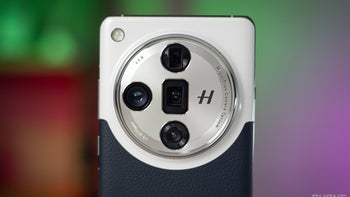
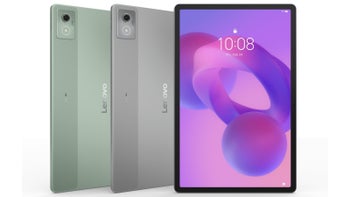
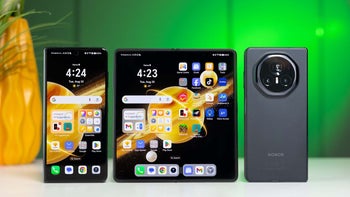

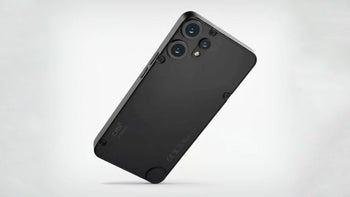
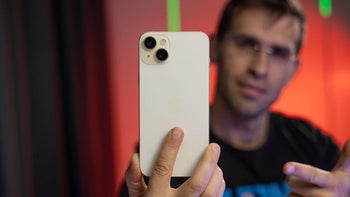
Things that are NOT allowed: